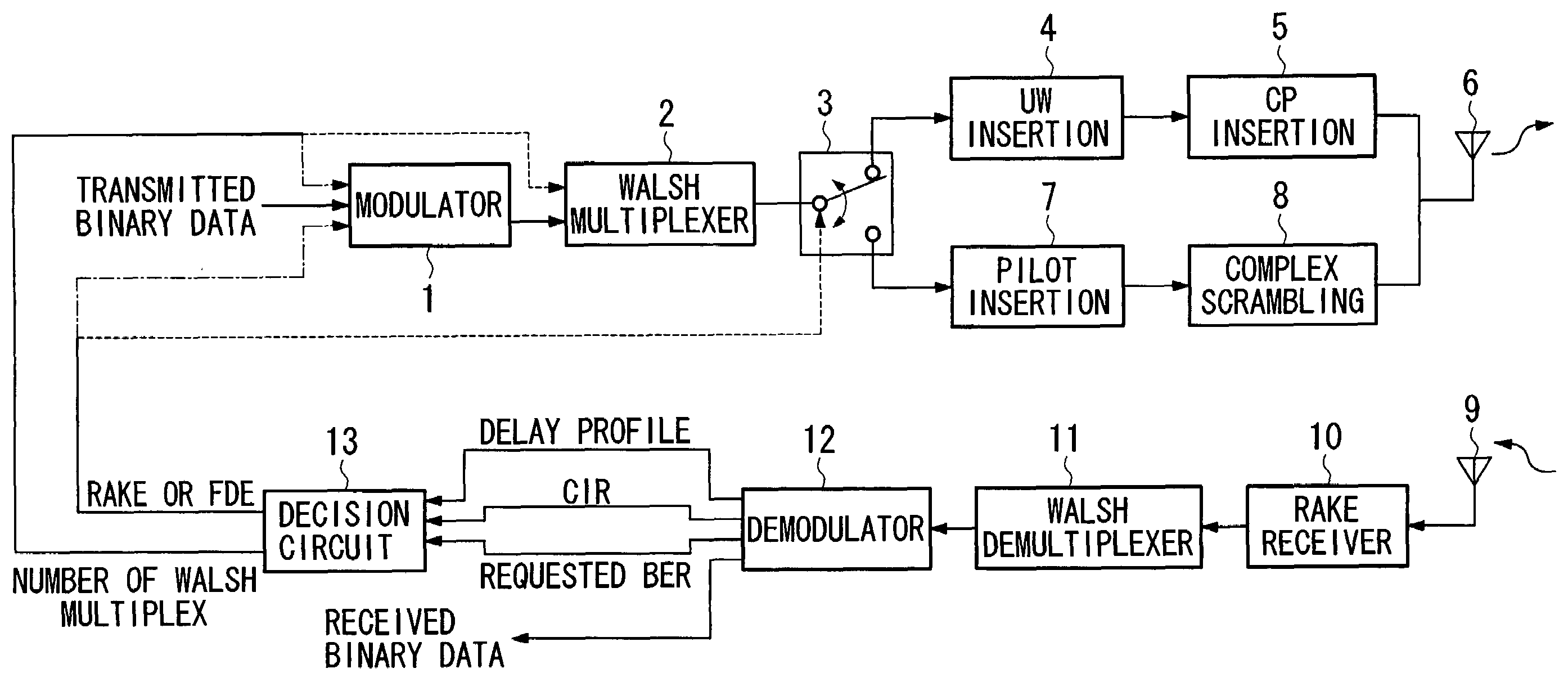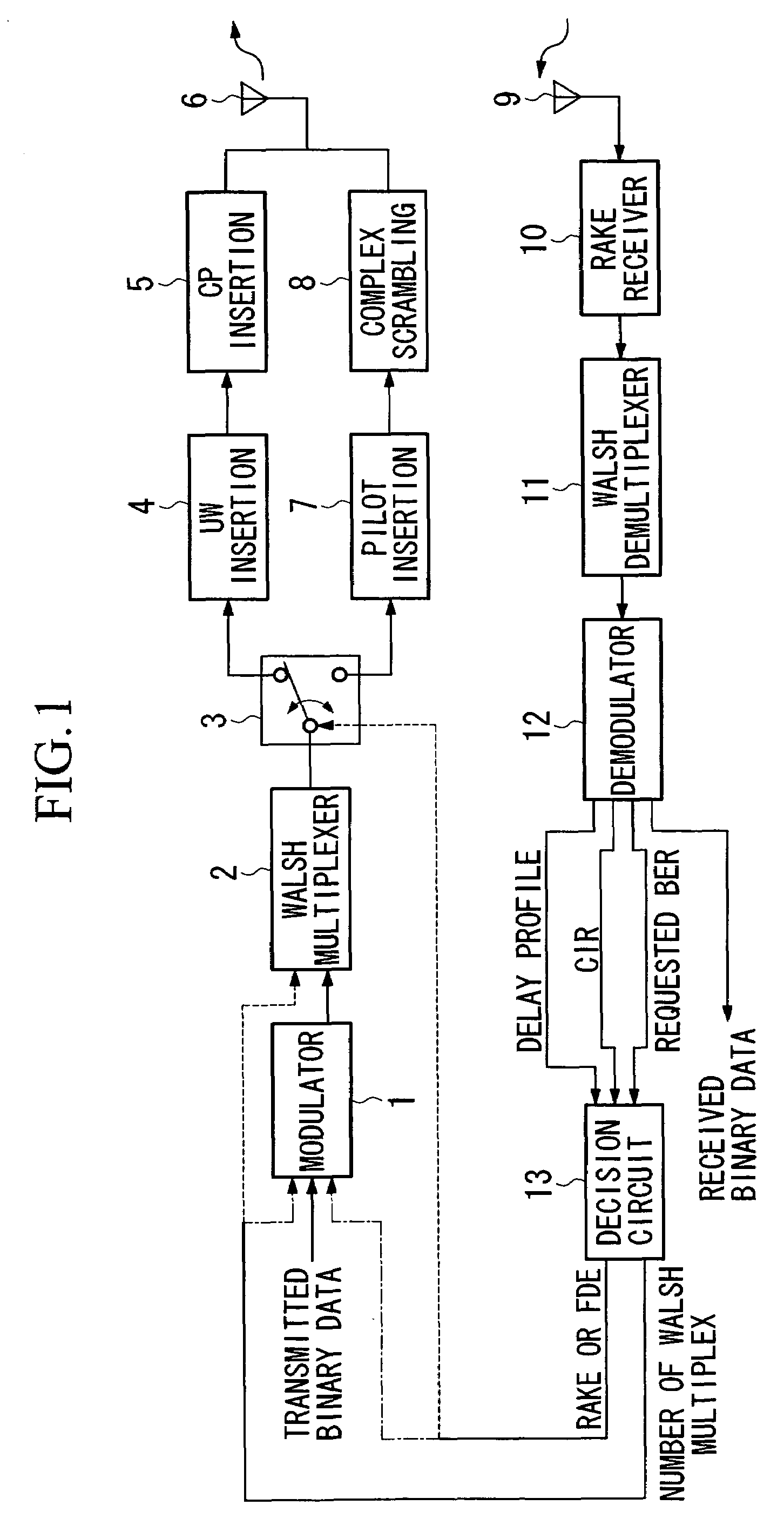Transmitter and receiver
a transmitter and receiver technology, applied in multiplex communication, orthogonal multiplex, polarisation/directional diversity, etc., can solve the problems of increasing the interference power, generating intersymbol interference (i.e. multipath interference), and increasing the number of multipath interferen
- Summary
- Abstract
- Description
- Claims
- Application Information
AI Technical Summary
Benefits of technology
Problems solved by technology
Method used
Image
Examples
first embodiment
[0058]FIGS. 1 and 2 are block diagrams showing examples when the transmitter and receiver of the first embodiment of the present invention are applied to the wireless communication of a down link between a base station and a mobile unit. FIG. 1 is a block diagram showing the structure of a base station provided with the transmitter of the present embodiment, while FIG. 2 is a block diagram showing the structure of a mobile unit provided with the receiver of the present embodiment.
[0059]Firstly, the base station provided with the transmitter of the present embodiment will be described using FIG. 1.
[0060]In FIG. 1, a modulator 1 indicates transmitted binary data and control signals and the like that are transmitted from a base station to a mobile unit. Output signals from the modulator 1 are input into a Walsh multiplexer 2. The Walsh multiplexer 2 multiplexes signals using code division multiplexing based on Walsh code in accordance with a transmission rate ...
second embodiment
[0138]The transmitter and receiver of the second embodiment of the present invention will be described.
[0139]FIGS. 8 and 9 are block diagrams showing the application of the transmitter and receiver of the second embodiment of the present invention to down link communication from a base station to a mobile unit. FIG. 8 is a block diagram showing the structure of a base station provided with the transmitter of the present embodiment, while FIG. 9 is a block diagram showing the structure of a mobile unit provided with the receiver of the present embodiment.
[0140]The transmitter and receiver of the present embodiment differ from the transmitter and receiver described in the first embodiment in that the existence or otherwise of code division multiplexing for signals transmitted by the transmitter and also the number of Walsh multiplex are decided by a mapping circuit using the reception quality that includes a delay profile and CIR measured on the receiver from the received signals, and...
PUM
 Login to View More
Login to View More Abstract
Description
Claims
Application Information
 Login to View More
Login to View More - R&D
- Intellectual Property
- Life Sciences
- Materials
- Tech Scout
- Unparalleled Data Quality
- Higher Quality Content
- 60% Fewer Hallucinations
Browse by: Latest US Patents, China's latest patents, Technical Efficacy Thesaurus, Application Domain, Technology Topic, Popular Technical Reports.
© 2025 PatSnap. All rights reserved.Legal|Privacy policy|Modern Slavery Act Transparency Statement|Sitemap|About US| Contact US: help@patsnap.com



